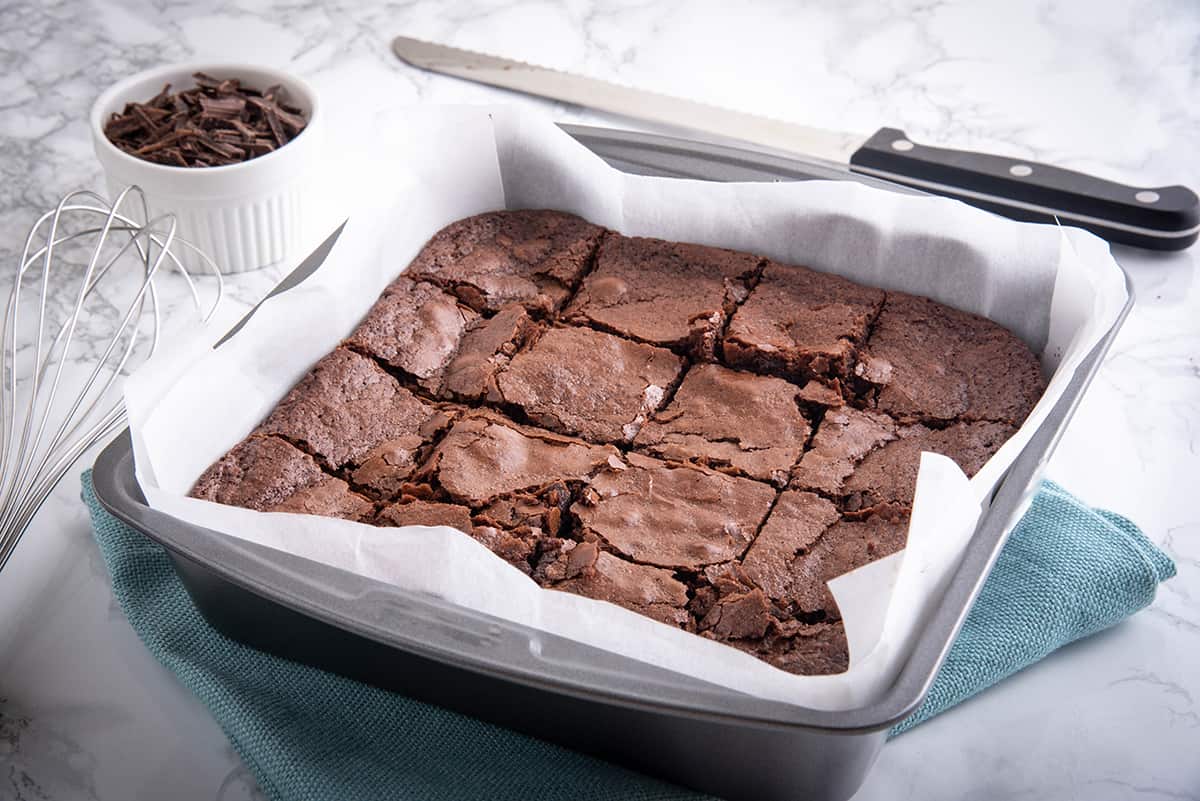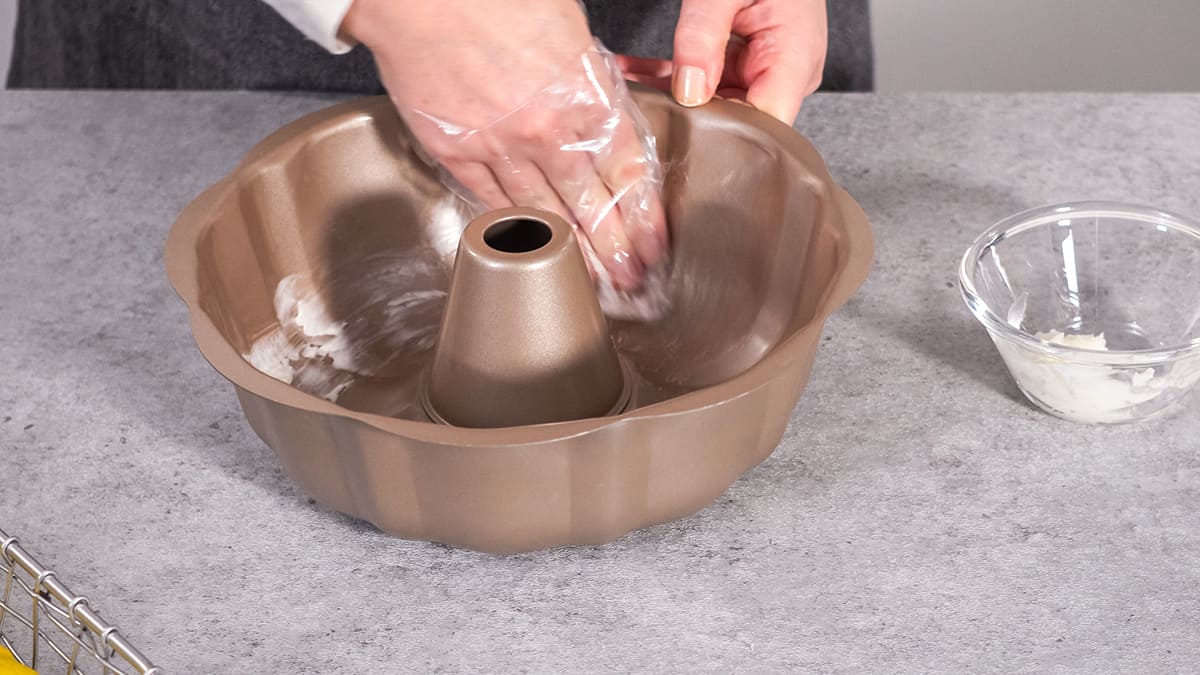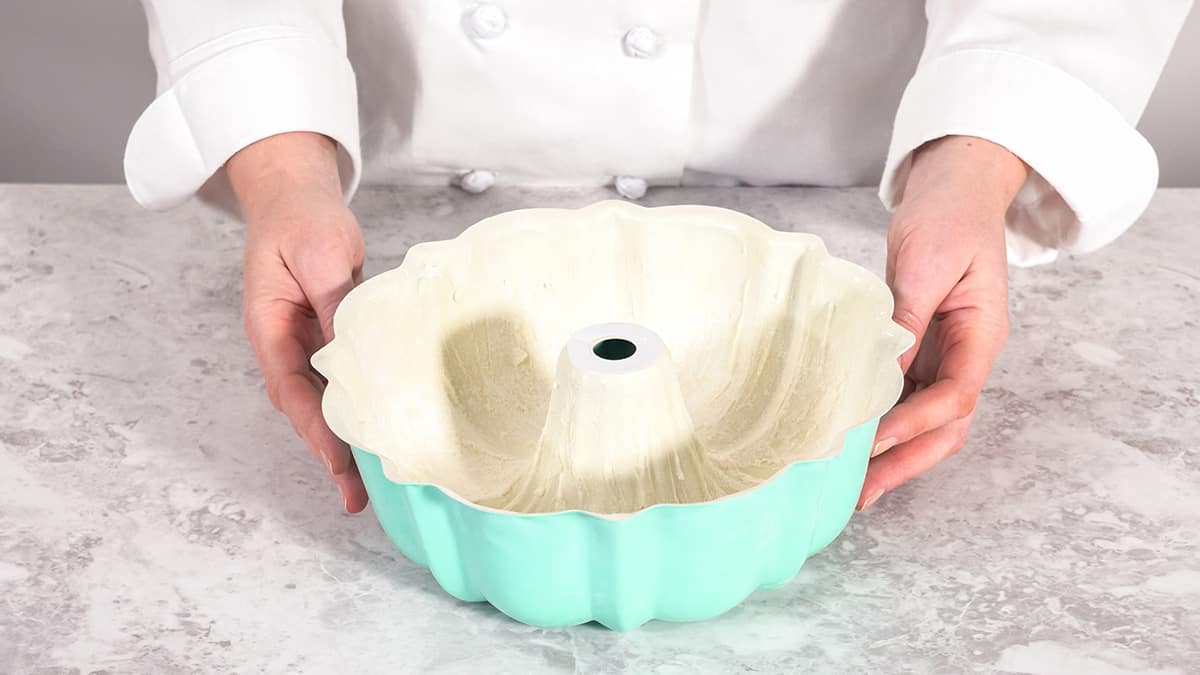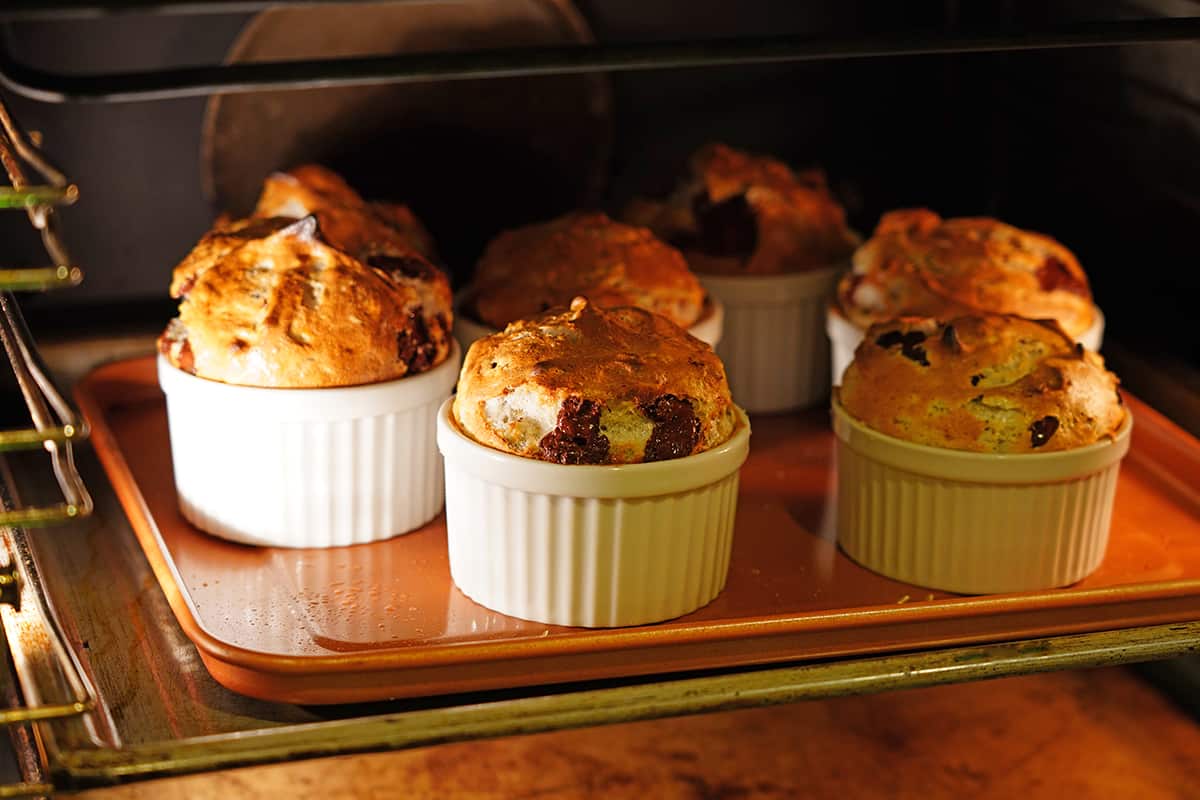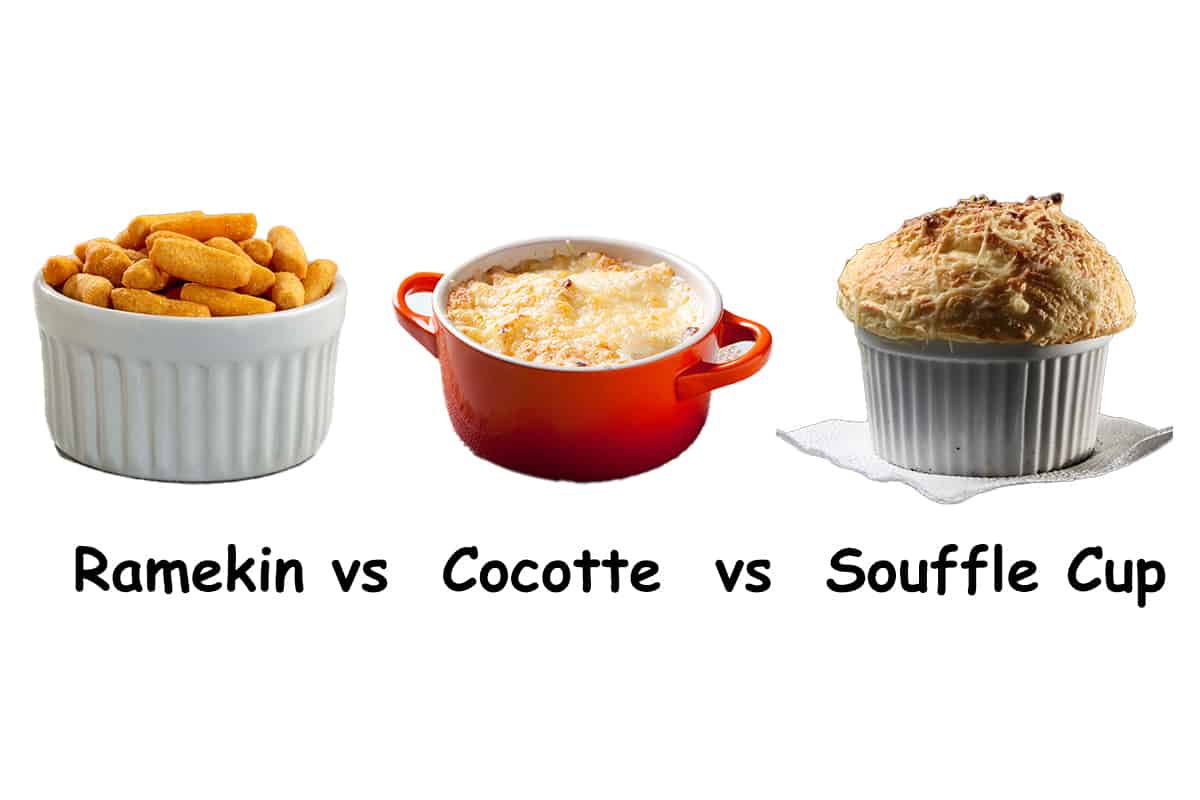When it comes to comfort snacks, there’s nothing that beats the traditional brownie. Whether you’re a fan of edge brownie slices or want the gooey stuff at the center, there’s not a soul on the planet that can turn down a brownie.
If you plan on making your own brownies, which is something everyone should do at least once in their lifetimes, then you need to look for the right brownie pan size. Traditional brownie pans come in 8-inch or 9-inch squares, while rectangular brownie pans measure 9 × 13 inches are popular, too. Both pan shapes stand 2 to 3 inches tall.
With all that said, is there such thing as an optimal brownie pan size? I’ll answer this question and many more in this brief guide.
Brownie Pan Sizes
There are many things that can go wrong when you try to bake your own brownies from scratch. For instance, adding too much flour can leave your brownies as stiff as a rock, or using too much oil or milk may have your brownie looking like a molten lava chocolate cake.
But what it boils down to is this: regardless of the recipe you follow, the quality of your baking endeavors will ultimately rely on the size and quality of your brownie pan.
Let’s start off with the sizes. Below, I’ll provide a brief chart that details the various shapes and sizes of brownie pans.
| Pan Shape | Pan Size (inches) | Pan Depth (inches) | Volume (cups) |
| Square | 8 × 8 | 2 | 8 |
| Square | 8 × 8 | 3 | 13 |
| Square | 9 × 9 | 2 | 11 |
| Square | 9 × 9 | 3 | 16 |
| Square | 10 × 10 | 2 | 13 |
| Square | 10 × 10 | 3 | 20 |
| Rectangular | 8 × 4 | 2.5 | 5 |
| Rectangular | 9 × 5 | 3 | 8 |
| Rectangular | 9 × 13 | 2 | 16 |
| Rectangular | 9 × 13 | 3 | 24 |
| Rectangular | 15.5 × 10.5 | 1 | 11 |
| Round | 8 | 2 | 6 |
| Round | 8 | 3 | 10 |
| Round | 9 | 2 | 8 |
| Round | 9 | 3 | 13 |
| Round | 10 | 3 | 16 |
Specialty Brownie Pan Shapes
If you’re like me and prefer slightly overcooked edge brownies, you should look for specialty edge pans. Edge pans look like traditional rectangular cake or brownie pans, but they come with additional side walls that cut through the brownie batter. That way, every brownie slice will have at least two crumbly edges.
Baker’s Edge makes and sells 9 × 12 × 2-inch Edge Brownie Pans with a total batter volume of 11 cups and a surface area of 150 square inches.
Alternatively, you can use traditional cupcake tins to make individual brownie “cupcakes” with 100% edge goodness along the walls. Cupcake tins are sold in the following sizes:
| Cupcake Size (inches) | Depth (inches) | Volume | Cupcake Count per Tray |
| 2 | 1.25 | 3 | 12 |
| 1 | 1.5 | 24 tablespoons | 24 |
Considerations When Choosing a Brownie Pan
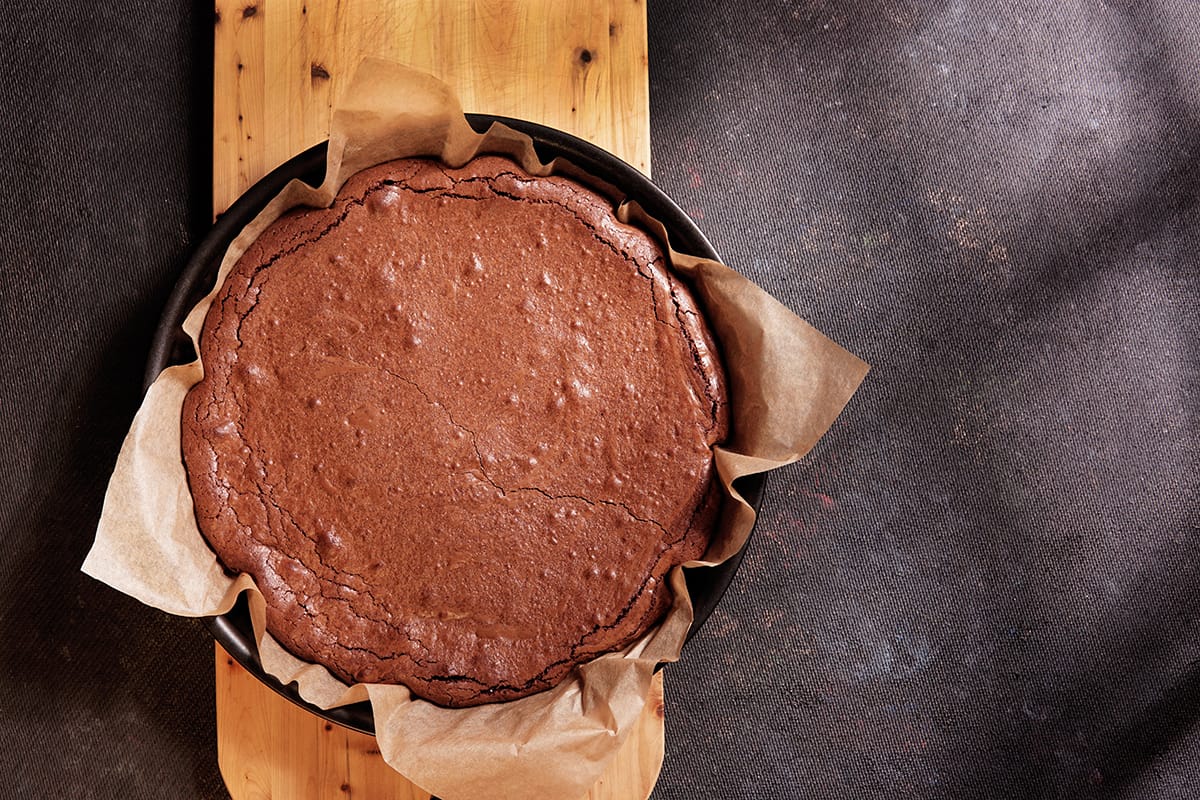
When searching for a brownie pan to help you with your kitchen experiment (which will hopefully come out tasting delicious), you should know that there’s a lot more to know than just the size of the brownie pan.
In this section, I’ll cover all of the other factors you need to consider when searching for a brownie pan.
Size
The overall size of the brownie pan has several implications. For instance, larger brownie pans will hold onto more batter, which means more brownies for everyone. However, the center of large brownies may come out a little undercooked compared to the edges, so you will have to take the fudginess of the brownie into consideration.
Also, consider the depth of the brownie pan. Most brownie pans will fall in the 2 or 3-inch range. The taller the brownie pan, the more batter it can hold, and the fudgier the brownie will turn out. Shallower pans hold onto less batter, which cooks more quickly than in tall brownie pans.
Material
Pans used for baking are typically made of steel, aluminum, glass, ceramic, or silicone. Each material has its own pros and cons, which I will detail down below.
Steel—retains heat to cook the edges and bottom of your brownie more quickly, but overcooking is almost unavoidable.
Aluminum—excellent heat retention and cheaper than steel but not as durable and also has an overcooking problem.
Glass—durable, eco-friendly, and great for reheating brownies, but glass cookware does not retain heat as well, and the corners can end up overcooked before the center of the brownie is fully cooked.
Ceramic—eco-friendly, low-maintenance, and has a high heat tolerance, but ceramic cookware isn’t durable, does not promise consistent baking results, and is hard to clean.
Silicone—easy to clean, nonstick, consistent baking results, and requires minimal greasing, but silicone cookware does not produce delicious brownie edges.
Food Grade
When looking for a brownie pan—or any piece of cookware, for that matter—it should be made for preparing food. That means it should be free of BPA and oven- and microwave-safe.
This isn’t something you typically have to worry about when shopping for brownie pans. However, if you opt for stainless-steel or cast-aluminum cookware, always make sure that the materials have been treated for baking before making the purchase.
Dividers
This is only for those that love edge brownies. Some brownie pans come with dividers that you can add or remove at will, allowing you to make edge brownies whenever the urge hits. However, if your loved ones prefer a fudgier feel to their brownies, you can take the dividers out or shift their position to make as many edge brownies as you like.
Most traditional brownie pans do not come with dividers or detachable segments, so you will have to look for specialty brownie pans if you want full control over how many edges to make per batch.
Maintenance
Maintaining cookware is probably the most difficult thing to do, especially if you’re a total newb in the kitchen. For instance, stainless steel is naturally rust-proof, but exposure to certain conditions and elements may cause it to form a layer of rust.
The type of brownie pan that’s easiest to maintain is a silicone brownie pan. However, in exchange for ease of use, the edges will not come out as dry or as dense as you’d like.
